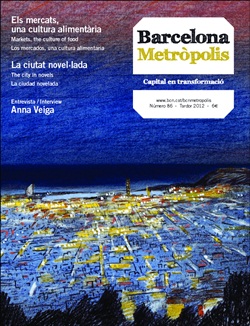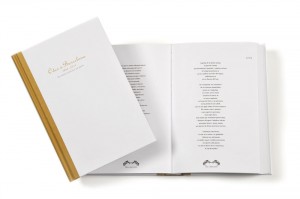[Odes to Barcelona, 1840–2011]
Selection, prologue and notes by
D. Sam Abrams
Barcelona City Council
Barcelona, 2012
334 pages
At the end of the prologue the critic Sam Abrams says: “Catalan literature has serious difficulties when it comes to correctly studying, documenting, publishing and transmitting its vast and very rich heritage.” This opinion is at least debatable, but that is what Abrams believes, and indeed he undertakes to try to rectify this shortcoming. One of the yields of his undertaking is his collection of odes whose common denominator is that they are all about Barcelona. A generous body of work, which includes poems written over more than 150 years ago and, as the critic holds, which eventually constituted a veritable subgenre of Catalan poetry, it has been disseminated more than twice over the last few decades.
The main merit of this collection is that it seeks to include as many odes as possible. Hence, the underpinning criterion is quantity rather than quality. It features poems, some of them very long, by 41 poets; and not just the classics – Rubió, Verdaguer, Maragall, Pere Quart – but also other less well-known pieces (Abrams highlights the modernist anti-odes of Apel·les Mestres and Jeroni Zanné), and a valuable selection of contemporary authors. Moreover, this survival has its suggestive black holes. Why, I wonder, were none of them written by three of the true greats of our symbolist tradition – three poets from Barcelona: Riba, Manent and Vinyoli? Perhaps because the poetry of the symbol does not work if from the inside of a poem there gushes a stream of dynamic and fleeting symbols like those typical of a modern metropolis.
The reader might initially assume that Odes a Barcelona, 1840–2011 will only contain works written in Catalan, but the second and third odes – by Víctor Balaguer and Amalia O’Crowley, from the time of the Catalan Renaissance (Renaixença) – were written in Spanish. Perfect. However, while Abrams’ prologue refers to more recent Spanish odes (he omits the excellent “Nostalgia urbana” [Urban Nostalgia], by Joaquim Marco, included in El muro de Berlín [The Berlin Wall]), he does not subsequently include them. A pity. In any event, as an ensemble it cuts a dash and is representative of both the great literary movements and the city’s successive mutations.
The first poem is “Barcelona”, by the patriarch Joaquim Rubió i Ors, published on 2 February 1840 in the Diario de Barcelona periodical. This groundbreaking ode already featured two of the subgenre’s most recurring chronotopes: the sea and Montjuïc. A proclamation of brazen romanticism, Rubió’s anachronistic take on the city focuses on a now-endangered glorious past. The accumulation of images from an idealised era intensifies the drama inherent in the ubi sunt, a classic cliché through which the poet seeks to act upon their present. This city is now a “crownless countess”, but “there was a time when you shared the sceptre of the sea with Venice”. Rubió’s intent is to call upon his contemporaries to make Barcelona a great Mediterranean capital once again.
Rubió’s ode is an exercise in civic poetry, seeking, in this instance, to encourage, or instil awareness, and which, in subsequent efforts, as the subgenre became more consolidated, would serve to denounce, proclaim, call upon or craft a message for the collective. Many of the odes set in Barcelona (even the most anodyne ones) have performed this function, from the perennially enrapturing Joan Maragall to the reflection of Lluís Jou (“Tingues cor mediterrani, Barcelona” [Have a Mediterranean heart, Barcelona]), via the schematic and politicised concatenation of Joan Brossa or the brilliant historical heart devised by José Agustín Goytisolo to praise intermingling as the city’s moral backbone.
I wondered at the time, and have yet to find a clear answer, why the great symbolists of modern poetry did not write odes to Barcelona. It is through the symbol, as Octavio Paz explained, that poetry becomes a mechanism for the analysis of contemporary subjectivity. Perhaps the exploration of one’s own individuality is overcome by such a potent, accelerated and plural symbolic whole as the city undoubtedly is. However, for more than a century now, it has been impossible to understand contemporary subjectivity outside the urban circumstance. The subgenre of the ode to Barcelona (unlike the ode to New York, for example) did not find it easy to solve this theoretical paradox. I would say that it has done so through a more meditative poetry. And some of the finest poems in the book – the sublime and magnetic ode by Enric Casasses, those by Joan Margarit and David Castillo – express precisely that. They represent the most valuable transformation of a poetic tradition which now, thanks to this book, we can plot in detail.
Note
“I amb tos pecats, nostra!”[And with your sins, ours!], from the second-last line of “Oda nova a Barcelona” [New Ode to Barcelona], by Joan Maragall.




